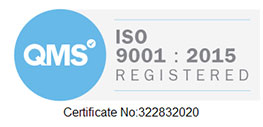G99 has been with us for a while now, and most people are fairly familiar with the compliance process for getting DNO approval for energisation with EON / ION and FON. We still find people are a little bit unsure about the different compliance studies needed, and how ‘hard’ they are.
Type B studies (1MW to 9.9MW) – these are relatively straightforward and focus on the behavior of the individual inverter or generator. The main compliance studies needed for these plants are usually easy to complete and involve a few steady state loadflows and a few RMS simulations. Provided the generator manufacturer has a decent RMS model of their control system, these usually do not present a problem.
Type C studies (10MW to 50MW) – these are where things see a bit of a step change in difficulty. At this level, what happens is the compliance studies need to integrate the overall Power Park Controller (PPC) with the generators. This is usually the hardest bit of the process, especially if they are provided by different manufacturers. A number of steady state loadflows are needed, which are usually provided by a PQ and VQ capability script and then there is a large group of RMS simulations that need completing. With these studies it is all about having good manufacturer data upfront and reliable PPC and Inverter models.
Type D studies (50MW+ or anything connected at 132kV) – these are almost identical to the Type C studies; but there are a few more added complications to consider for the reactive power capability requirement due to an increased performance range. The retained voltages for the Fault Ride Through (FRT) simulations are also a bit more onerous.
If your project is based in Scotland though – be careful as larger sites have to comply with the Grid Code, which is similar, but a bit tougher than the G99 requirements. In southern Scotland the threshold is 30MW and in Northern Scotland the threshold is 10MW.
If you would like to know more, please get in touch.



